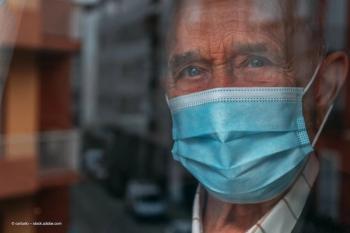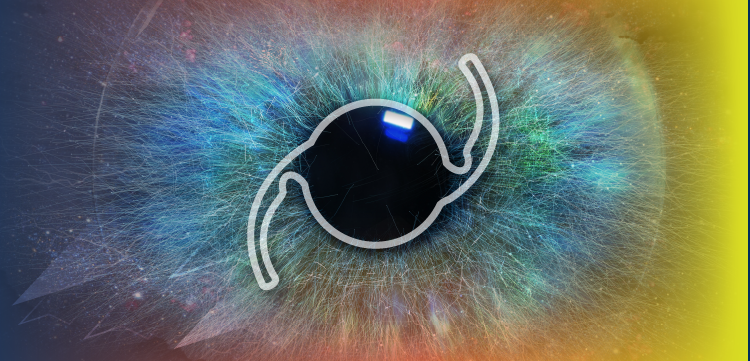
- Ophthalmology Times Europe January/February 2025
- Volume 21
- Issue 1
- Pages: 28 - 30
Helping patients with glaucoma manage mental health
The link between eye health and mental health may be deeper than previously believed
The data regarding the decline of mental health in association with vision loss in glaucoma are sobering. Vision loss often results in significant disability and is associated with a substantial economic burden, reduced quality of life, concurrent medical issues and mental health problems.1
Considerable data, according to the authors of the study, indicate that rates of depression and anxiety are elevated among people with visual impairments.1
Many studies have focused on mental health declines associated with glaucoma. For example, about one-third of patients with visual impairments and disabling eye diseases experience mild depressive symptoms,2 while 10.7% to 45.2% of study samples report moderate to severe depressive symptoms.2-6
An unmet need: Uncovering the anxiety
Leon Herndon, Jr, MD, division chief of glaucoma and professor of ophthalmology at Duke University in Durham, North Carolina, and past president of the American Glaucoma Society, is in a prime position to appreciate the scope of the mental health issues in his clinical practice. In many cases, he is treating patients with more advanced disease who were referred for a last-ditch attempt at stopping disease progression to blindness. His real-world experience in his clinical practice bears out the aforementioned glaucoma data: Dr Herndon says 25% to 33% of patients have some form of anxiety or depression.
“This is an area that needs to be explored in more detail, considering the psychological impact glaucoma has on this patient population,” he commented.
From the patients’ perspective, he pointed out, they present with more anxiety than clinical depression, in that many people fear blindness more than they do a diagnosis of cancer or paralysis. Physicians may need to probe patients with advanced disease about their anxiety because, Herndon explained, patients are afraid to ask whether blindness is inevitable in their case.
“Physicians can get a sense of what the patients may be thinking based on the tension in the room among patients and their family members, or about their fears just by looking in their eyes,” he said.
Herndon addresses this problem by having an open discussion on the reality of the clinical situation with all patients, especially new patients. He provides information about their position on the disease spectrum, ranging from early-stage disease to blindness from glaucoma, on a scale of 1 to 10.
This clarity may be very helpful for patients who are experiencing anxiety that is out of proportion to the disease stage, and in many cases an open discussion will allay their concerns. This can also work in reverse for patients who have not been taking their diagnosis seriously.
Glaucoma progression caused by anxiety and depression
In a variation on the topic of glaucoma and mental health, a Korean study7 evaluated both whether anxiety and depression caused glaucoma progression, and the possible underlying mechanisms in patients diagnosed with glaucoma. They conducted a retrospective case-control study that included 251 eyes with open-angle glaucoma that had been followed for a minimum of 2 years. The patients were classified into four groups based on high or low anxiety and high and low depression, according to the scores on the Beck Anxiety Inventory and Beck Depression Inventory-II.
Patients with higher anxiety scores showed faster rates of retinal nerve fibre layer (RNFL) thinning, higher IOP and more frequent disc haemorrhages. Anxiety scores were significantly correlated with rates of RNFL thinning and IOP fluctuations. They also showed that patients with higher depression scores had worse visual field mean deviation and higher heart rate variability.
The authors suggest that anxiety may increase the risk of glaucoma progression through effects on IOP and blood flow regulation. They propose that managing anxiety and depression could potentially help in managing glaucoma progression. They suggested that anxiety and depression may be both a consequence of and a risk factor for glaucoma progression, rather than solely a result of glaucoma diagnosis, as previously thought.
Another group of researchers tested the same hypothesis in patients who were considered glaucoma suspects. Samuel Berchuck, PhD, an assistant professor of biostatics and bioinformatics, Division of Translational Biomedical Informatics at Duke University, alongside his colleagues retrospectively assessed the impact of anxiety and depression on the risk of a glaucoma diagnosis in these patients.8 They studied a cohort of 3,259 glaucoma suspects followed over an average of 3.6 years. Among those patients, 28% of participants were diagnosed with glaucoma during follow-up. At baseline, 32% had anxiety and 33% had depression diagnoses.
The authors suggested that anxiety may increase glaucoma risk through the effects on IOP, as patients with anxiety had larger IOP fluctuations during follow-up. These findings suggest that screening patients with glaucoma for psychiatric disorders may be beneficial.
Other effects of anxiety and depression in glaucoma
A German team of investigators delved into the effects of anxiety and depression on sleep in patients with glaucoma. They found that those with severe glaucoma were affected more than those with glaucoma but without visual field defects (VFD).9
The study examined depression, anxiety and sleep disturbances in patients with glaucoma with severe VFD compared with those with no or mild VFD. Patients with severe VFD had significantly higher rates of depression (18.3% vs 2.7%); trait anxiety (28.5% vs 10.8%); and sleep disturbances (75.5% vs 46%). The presence of severe VFD was associated with
4 times higher risk of depression, 6 times higher risk of trait anxiety, and a 4 times higher risk of sleep disturbance than no or mild VFD.
The authors recommend routine screening for these conditions in patients with glaucoma, especially those with severe VFD, and they suggest that interdisciplinary treatment approaches incorporating psychiatric assessment and psychochronobiological treatments may be beneficial.
Next steps
Considering the high prevalence of glaucoma, ophthalmologists and those who are glaucoma specialists can help patients by having frank conversations about their feelings about their disease and the potential need for further resources, according to Dr Herndon.
In addition, he suggested involving patients’ primary care physicians and optometrists and making them aware of the diagnosis.
Primary care physicians and optometrists may not be aware of the potential development of Charles Bonnet syndrome (CBS), which can cause visual hallucinations in people with diseases characterised by severe vision loss, such as advanced glaucoma and macular degeneration. Educating primary care physicians about CBS and its benign nature should prevent them from prescribing antipsychotic medications.
The American Society of Retina Specialists (ASRS) defines the syndrome as “a condition that causes people with decreased vision and various eye diseases to have visual hallucinations. These hallucinations can include seeing patterns, or more complex images such as people, animals, flowers and buildings.”10
The exact cause of the visual hallucinations is not known, according to the Retina Health Series of the ASRS: “Most researchers believe they are due to deafferentation: a loss of signals from the eye to the brain. There is some evidence from special magnetic resonance imaging studies indicating that these signals normally inhibit nerve activity in the brain; when the signals are absent, there is more spontaneous nerve activity that is perceived as hallucinations.”
Awareness of the syndrome by patients can relieve the anxiety that can be associated with the development of hallucinations. In Dr Herndon's practice, patients have reported experiencing fewer hallucinations after being informed about the syndrome.
Dr Herndon also mentioned the importance of patients having access to social workers and visual rehabilitation services. For example, Duke University has a clinic that provides occupational therapy and helps patients maximise the limited vision that remains.
“It’s important to give patients hope,” Dr Herndon concluded. “Without hope, they likely will continue to have anxiety and depression that can spiral out of control. With glaucoma, patients can retain their vision over a span of years with appropriate care.”
References
1. Demmin DL, Silverstein SM. Visual impairment and mental health: unmet needs and treatment options. Clin Ophthalmol. 2020;14:4229-4251. doi:10.2147/OPTH.S258783
2. Rees G, Tee HW, Marella M, Fenwick E, Dirani M, Lamoureux EL. Vision-specific distress and depressive symptoms in people with vision impairment. Invest Opthalmol Vis Sci. 2010;51(6):2891-2896. doi:10.1167/iovs.09-5080
3. Mayro EL, Murchison AP, Hark LA, et al. Prevalence of depressive symptoms and associated factors in an urban, ophthalmic population. Eur J Ophthalmol. 2020;31(2):112067212090170. doi:10.1177/1120672120901701
4. Zhang X, Bullard KM, Cotch MF, et al. Association between depression and functional vision loss in persons 20 years of age or older in the United States, NHANES 2005-2008. JAMA Ophthalmol. 2013;131(5):573-581. doi:10.1001/jamaophthalmol.2013.2597
5. Li W, Zhong B, Liu X, et al. Depressive symptoms among the visually disabled in Wuhan: an epidemiological survey. Shanghai Arch Psychiatry. 2013;25(5):306-313. doi:10.3969/j.issn.1002-0829.2013.05.006
6. Stevelink SAM, Fear NT. Psychosocial impact of visual impairment and coping strategies in female ex-Service personnel. J R Army Med Corps. 2016;162(2):129-133. doi:10.1136/jramc-2015-000518
7. Shin DY, Jung KI, Park HYL, Park CK. The effect of anxiety and depression on progression of glaucoma. Sci Rep. 2021;11(1):1769. doi:10.1038/s41598-021-81512-0
8. Berchuck S, Jammal A, Mukherjee S, Somers T, Medeiros FA. Impact of anxiety and depression on progression to glaucoma among glaucoma suspects. Br J Ophthalmol. 2021;105(9):1244-1249. doi:10.1136/bjophthalmol-2020-316617
9. Agorastos A, Skevas C, Matthaei M, et al. Depression, anxiety, and disturbed sleep in glaucoma. J Neuropsychiat Clin Neurosci. 2013;25(3):205-213. doi:10.1176/appi.neuropsych.12020030
10. Charles Bonnet syndrome. The Foundation of the American Society of Retina Specialists. 2019. Accessed September 2024. https://www.asrs.org/content/documents/fact-sheet-34-charles-bonnet-syndromefinal.pdf
Leon Herndon Jr, MD |E: [email protected]
Dr Herndon is division chief – glaucoma and professor of ophthalmology at Duke University, Durham, North Carolina. He has no financial disclosures related to this subject matter.
Articles in this issue
10 months ago
IOL design puts a new spin on vision11 months ago
Shifting the narrative around dry eye disease11 months ago
A new home treatment for amblyopiaNewsletter
Get the essential updates shaping the future of pharma manufacturing and compliance—subscribe today to Pharmaceutical Technology and never miss a breakthrough.












































